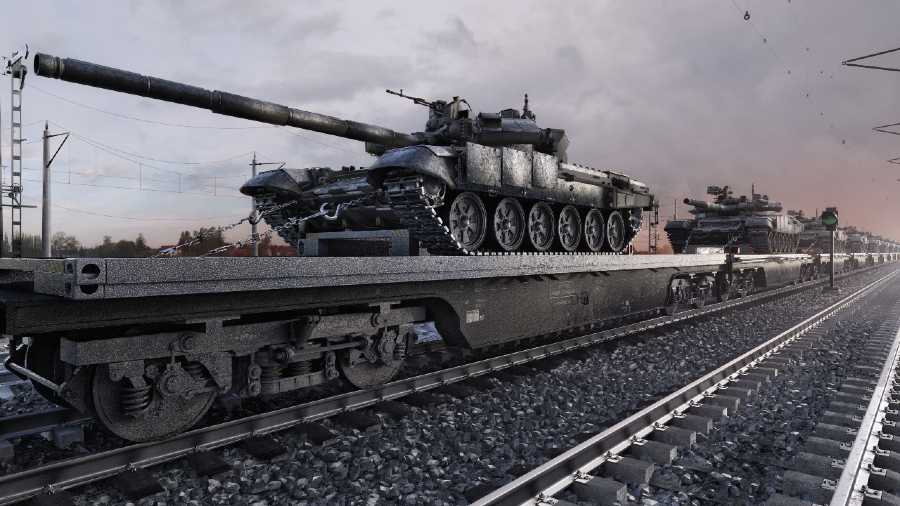On a snowy tarmac at Amari Air Base in northern Estonia on Sunday morning, pallets of rifles, ammunition and other weapons were being loaded onto one of the largest cargo planes in the world, an Antonov AN-124, belonging to the Ukrainian air force. It is an artifact of the Cold War, built and purchased when Ukraine was still part of the Soviet Union.
Now it is being turned back against the Russian invasion of Ukraine, part of a vast airlift that American and European officials describe as a desperate race against time, to get tons of arms into the hands of Ukrainian forces while their supply routes are still open.
Scenes like this, reminiscent of the Berlin airlift — the famed race by the western allies to keep West Berlin supplied with essentials in 1948 and 1949 as the Soviet Union sought to choke it off — are playing out across Europe.
In less than a week, the US and Nato have pushed more than 17,000 anti-tank weapons, including Javelin missiles, over the borders of Poland and Romania, unloading them from giant military cargo planes so they can make the trip by land to Kyiv, the Ukrainian capital, and other major cities. So far, Russian forces have been so preoccupied in other parts of the country that they have not targeted the arms supply lines, but few think that can last.
But those are only the most visible contributions. Hidden away on bases around eastern Europe, forces from US Cyber Command known as “cybermission teams” are in place to interfere with Russia’s digital attacks and communications — but measuring their success rate is difficult, officials say.
In Washington and Germany, intelligence officials race to merge satellite photographs with electronic intercepts of Russian military units, strip them of hints of how they were gathered, and beam them to Ukrainian military units within an hour or two. As he tries to stay out of the hands of Russian forces in Kyiv, President Volodymyr Zelensky of Ukraine travels with encrypted communications equipment, provided by the Americans, that can put him into a secure call with President Biden.
Zelensky used it Saturday night for a 35-minute call with his American counterpart on what more the US can do in its effort to keep Ukraine alive without entering into direct combat on the ground, in the air or in cyberspace with Russian forces.
Zelensky welcomed the help so far, but repeated the criticism that he has made in public — that the aid was wildly insufficient to the task ahead. He asked for a no-fly zone over Ukraine, a shutdown of all Russian energy exports and a fresh supply of fighter jets.
It is a delicate balance. On Saturday, while Biden was in Wilmington, Delaware, his National Security Council staff spent much of the day trying to find a way for Poland to transfer to Ukraine a fleet of well-used, Soviet-made MIG-29 fighter jets that Ukrainian pilots know how to fly. But the deal is contingent on giving Poland, in return, far more capable, American-made F-16s, an operation made more complicated by the fact that many of those fighters are promised to Taiwan — where the US has greater strategic interests.
Polish leaders have said there is no deal, and are clearly concerned about how they would provide the fighters to Ukraine and whether doing so would make them a new target of the Russians. The US says it is open to the idea of the plane swap.
“I can’t speak to a timeline, but I can just tell you that we’re looking at it very, very actively,” secretary of state Antony J. Blinken said on Sunday, during a trip that has taken him to Moldova, another non-Nato country that American officials fear may be next on Russian President Vladimir V. Putin’s hit list of nations to bring back into Moscow’s sphere of influence.
And in Washington, lobbying groups and law firms that once charged the Ukrainian government handsomely for their services are now working for free, helping Zelensky’s government plead for more sanctions on Russia.
(New York Times News Service)











